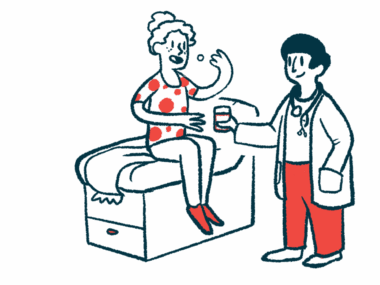I wasn’t prepared for the harsh symptoms of hemolytic anemia
For me, this condition is one of the most challenging parts of aHUS
Written by |

A nurse I hadn’t met entered my room in the intensive care unit carrying an IV bag full of red liquid. She cleared her throat to have my friend and I pause our conversation.
“Hi, I’m here to bring you some blood products, but I have a consent form that needs to be read and signed.” She was soft-spoken and seemed nervous about reading the waiver form. I motioned for her to go ahead and bring it in.
“Bring it in, hook it up, I’ll sign whatever. This is my eighth or ninth blood transfusion — not my first rodeo,” I said, then continued the conversation with my friend.
The nurse smiled and seemed to relax a little after that. She hooked up the new bag of blood to my IV.
I’d had multiple blood transfusions since I’d been admitted to the hospital, and this one wouldn’t be my last. By the time I was discharged, I’d received 18 transfusions. The rare disease I’d nearly died from had caused a severe type of anemia.
The effects of hemolytic anemia
I was no stranger to anemia, having had the condition several times in my life. It occurs when your body doesn’t produce enough healthy red blood cells, causing your body not to get enough oxygen-rich blood. That can result in tiredness, weakness, shortness of breath, dizziness, headaches, or even a rapid and irregular heartbeat.
My anemia had been caused by an iron deficiency, which I was able to correct by taking an iron supplement and including more iron-rich foods in my diet. But when I was admitted to the hospital in September 2020, I had an entirely new-to-me and deadly type of anemia: hemolytic. It was a major symptom of my atypical hemolytic uremic syndrome (aHUS).
Hemolytic anemia can be deadly because it’s caused by the rupture or destruction of red blood cells (hemolysis). Before I went to the hospital, I’d developed large, dark bruises all over my body. I assumed they were a result of my iron-deficiency anemia and a lot of working hours.
Having aHUS is challenging in itself. But being mildly anemic for most of my life didn’t prepare me for the harsh reality of developing permanent hemolytic anemia.
Before my illness, my hemoglobin levels usually stayed between 10-12 g/dL. (According to the Mayo Clinic, normal hemoglobin levels for adult women range from 11.6-15 g/dL.) But since I was diagnosed with aHUS, my level floats between 8-10.5 g/dL. And I can absolutely tell.
I regularly deal with dizziness, shortness of breath, weakness, and fatigue. Sometimes it’s hard to tell if my symptoms are from kidney disease, antibody therapy, lupus, or aHUS, but the dizziness and shortness of breath are probably from the hemolytic anemia.
Shortness of breath is one of the most difficult and frequent symptoms I have to handle. I can’t climb more than four steps without having to stop and rest. If I try to rush up a whole flight of stairs, I’ll feel as if I’m trying to breathe through a coffee-stirring straw.
Arrhythmia, or an uneven heartbeat, is one of the scariest anemia symptoms I face. It stops me in my tracks. It almost feels like my heart hiccups and smacks into my chest wall. While it lasts for only a few seconds, it’s jarring.
Hemolytic anemia is particularly complicated because my hemolysis is caused by my aHUS. I can’t simply take iron supplements to increase my hemoglobin levels; besides, my kidneys don’t function well enough to process them. I still consume a lot of iron-rich foods to help with my iron deficiency, but I occasionally need blood transfusions because of the hemolytic anemia. My hemoglobin levels are checked every 14 days, and they always will be.
Anemia makes my life difficult, but knowing what causes these symptoms makes them a little easier to navigate.
Note: aHUS News is strictly a news and information website about the disease. It does not provide medical advice, diagnosis, or treatment. This content is not intended to be a substitute for professional medical advice, diagnosis, or treatment. Always seek the advice of your physician or other qualified health provider with any questions you may have regarding a medical condition. Never disregard professional medical advice or delay in seeking it because of something you have read on this website. The opinions expressed in this column are not those of aHUS News or its parent company, Bionews, and are intended to spark discussion about issues pertaining to aHUS.






Leave a comment
Fill in the required fields to post. Your email address will not be published.